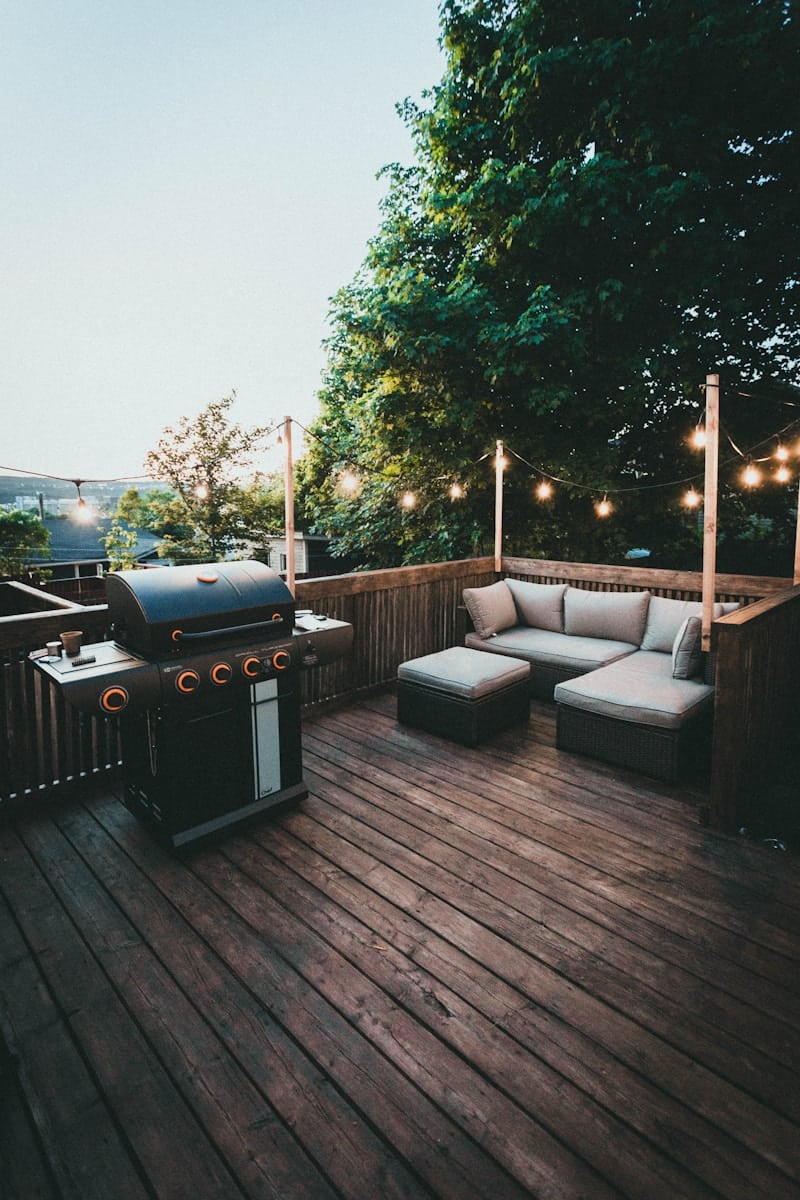
Summer will be here soon, and with it comes more time spent outside. If you’re looking at some outdoor lighting to light your way, you may be wondering what to use. What’s safe for your yard? What will last for years to come? And if you have children, outdoor lighting safety is extremely important.
Bill Lewis of The Spruce outlines the top 11 tips for safe outdoor lighting:
Always make sure your lighting fixtures are rated for outdoor use. Fixtures installed under a porch or awning should at least be marked for damp locations, while fully exposed fixtures need to be rated for wet locations or labeled weatherproof. These ratings help ensure the fixtures can withstand rain, humidity, and temperature changes.
Don’t just grab any light bulb. Bulbs used outdoors—especially in open fixtures—should be specifically rated for exterior use. These are designed to handle moisture, heat, and freezing temperatures. If you’re having trouble finding one, look for appliance-rated bulbs. If they can survive inside a freezer, they can likely survive on your porch.
Every light fixture has a maximum wattage listed, and it’s important to stay within those limits. Using a bulb with too much wattage can cause overheating, damage the wiring, and become a fire risk. Always go by the actual wattage of the bulb, not the “equivalent wattage” listed on LED or CFL packaging.
Only use extension cords that are rated for outdoor use. Indoor cords are not designed to withstand wet conditions or rougher surfaces, and using them outside can lead to serious electrical hazards. Outdoor-rated cords are labeled for heavy-duty use and are better insulated against the elements.
Whether you’re decorating for summer parties or holidays, be sure your string lights or themed decorations are labeled for outdoor or indoor/outdoor use. Indoor-only lights are not built to withstand moisture or extreme temperatures.
Be mindful of where you place your lights. Bulbs that generate heat—like halogens or older incandescents—should be kept away from dry leaves, hay, fabrics, or wood. Even outdoor-rated products can be hazardous if they’re too close to flammable objects.
Outdoor power should always come from outdoor receptacles. These should be weather-resistant and installed in appropriate boxes with protective covers to keep out moisture, dirt, and debris. Avoid running cords through windows or doors from indoor outlets.
Ground Fault Circuit Interrupter (GFCI) outlets are a must for any outdoor circuit. They’re designed to shut off power instantly if an electrical imbalance is detected, preventing electrocution. If your outdoor outlets aren’t GFCI-protected, have a licensed electrician install or update them.
If your outlet is under a roof or enclosed patio, it still needs a cover. Use “trap door” style covers that close when the outlet is not in use. These are designed for damp locations and can protect your outlet even when not directly exposed to rain.
For outlets fully exposed to the elements, use an “in-use” cover. These allow you to keep cords plugged in while still protecting the connection from rain, snow, or sprinklers. The cover forms a weather-tight seal around the plug and outlet.
When attaching string lights or decorations, avoid using metal fasteners or nails. Instead, use plastic cable ties or insulated clips that won’t pierce the wire or conduct electricity. This reduces the risk of shorts or shocks.
Whether you’re installing new exterior lights, updating old wiring, or simply want peace of mind that your outdoor setup is safe and up to code, Affordable Electric is here to help. Our licensed electricians proudly serve the greater Twin Cities area and are available 24/7 for emergency service.
Contact us today to schedule your outdoor lighting inspection, installation, or repair. Let’s make this summer bright—and safe.